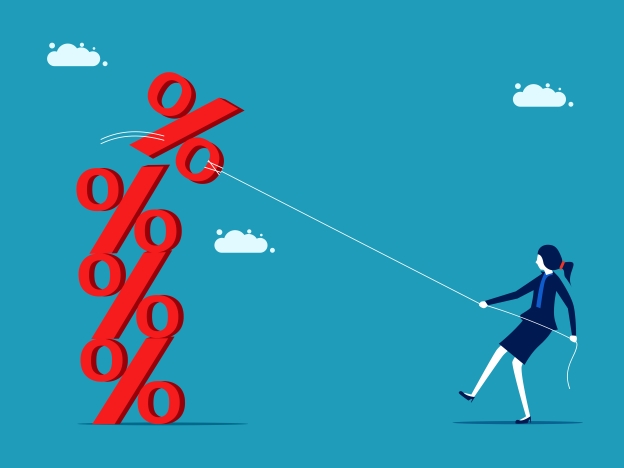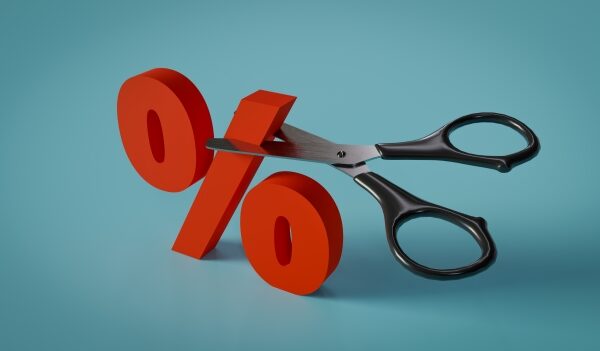
Corporates weigh when to swap fixed-rate debt to floating as inflation cools and the rate outlook shifts.
Growing conviction that the Federal Reserve is at the end of its interest rate hike cycle and may cut rates next year has turned up the heat on the simmering issue of whether and when corporates with debt should swap some of their fixed-rate exposure to floating rates. Many companies in the NeuGroup Network say nearly all their debt is fixed—a byproduct of very low rates that prevailed for about 15 years following the global financial crisis of 2007-2009.
- The issue is particularly compelling now because some treasury professionals and bankers are for the first time in their careers adjusting strategies and tactics to a market where rates are relatively high today but are expected to decline in the not-too-distant future. This, of course, follows the challenges created in 2022 by soaring inflation and skyrocketing rates.
- Speaking at a recent meeting of NeuGroup for Mega-Cap Assistant Treasurers sponsored by Societe Generale, Subadra Rajappa, head of US rates strategy at the bank, said decisions about whether and when to swap to floating are best addressed on a case-by-case basis. Subsequent discussions by members underscored that point and made clear that companies approach the issue from various perspectives—informed by debt levels, average weighted cost of debt, future issuance plans, internal risk tolerance and business cyclicality.
Natural floating. “On fixed to float, I have very strong opinions—only for our portfolio,” said one member whose views stood out and include a reason not heard often in NeuGroup meetings for choosing not to swap to floating—arguing that what the company is doing and will continue to do is essentially “floating naturally.” (Swaps are considered synthetic.)
- This company is a frequent issuer, has significant debt outstanding—about 95% of it fixed—and bonds coming due every year that it refinances at prevailing rates. “We’re putting on new debt every year, so you could say our short-term fixed is somewhat floating naturally,” the member said. In other words, if the Fed cuts rates and the yield curve normalizes, the company may benefit from lower rates as it replaces old debt with new.
- The core reason this member is not swapping to floating anytime soon is the company’s average weighted cost of debt is about 3.5%. “We have a very low fixed average cost of debt and I don’t see any reason to change that at this point in time,” the member said. “If I had 5% debt, 7% weighted average cost of debt, I would want to add some float.” They said a swap will make more sense as the portfolio’s average rate approaches 5%.
- One obstacle to swapping to floating now is that the company’s management team has not historically supported swaps between seven and 10 years because of counterparty risk concerns. And shorter duration swaps would present more risk that the company is stuck paying more interest than it’s receiving—called negative carry—before floating rates decline sufficiently so that it is on the winning side of the swap.
- The member said if it made sense to swap now based on the company’s average weighted cost of debt, they would not object to enduring negative carry provided they could enter a long-dated swap.
Synthetic ASAP. Negative carry is not a deterrent for a different member whose treasury team is pushing to do the company’s first fixed to floating-rate swap as soon as possible. “The negative carry is what it is,” this member said. Swapping to floating, they said “is a risk management tool and, yes, you can wait until the carry is less negative, but that will not be the optimal time to enter the market, as we all know.”
- In a follow-up interview the member and a colleague explained that their motivation for asking management to approve the swap is to hedge the risk that interest income will decline as the rate cycle downshifts. “We have an exposure to rates declining that will hurt our net interest income/expense,” the colleague said.
- “We have cash and investments that are short in duration and are therefore a floating-rate exposure. Our debt, however, is all fixed rate with a considerably longer duration. We want to mitigate the interest rate risk by swapping some debt to a floating rate exposure.”
- The surge in interest income the company has earned on its investments will help make selling the swap to management easier, mitigating the pain of negative carry, the member explained. “We are as a team very much ready to go, realizing we have some room to take in the impact of negative carry from where we set the budget and where we are currently in the year from an EPS standpoint. We think getting started soon is the right move.”
- The colleague added, “It’s a long elevator ride to sell people on this and the hardest part is to get everybody not to focus on the cash flows from one part of your net interest margin, this one particular swap, but to look at what this is going to do to our entire portfolio and our EPS and that this going to significantly reduce our interest rate risk.”
Middle ground. Another member at the meeting is grappling with the fixed-to-floating issue, taking a go-slow approach echoed by others in NeuGroup meetings over the last year. His company’s business is cyclical and has taken on significant long-term debt financing acquisitions, 90% of it fixed.
- “From a tactical standpoint, higher debt levels make managing our exposure to floating rates in an ‘organic’ way, using commercial paper only, more challenging, as we are capping our overall CP balances,” he explained in a follow-up conversation. “Therefore, gradually adding synthetic exposure to floating rates using fixed-to-floating interest rate swaps would help achieve a more balanced mix of debt.”
- The member envisions a multiyear process to achieve the company’s desired target for floating-rate debt, which is undisclosed. “It is impossible to time the market and the current negative carry on swapping to floating is high,” he said. “We plan to monitor a number of macro indicators including:
- Negative carry (monitor for declining negative initial carry).
- Fedspeak (monitor the Fed’s message suggesting the end of rate hikes that aligns with market expectations.)
- CPI (look for a slowing inflation rate closer to the Fed’s target).”
- The member said the company’s banks cited backtesting showing swapping to floating within a three to six month range before or after the end of a hiking cycle generates the maximum savings. “As such, we are developing a programmatic and dynamic approach to gradually layer in swaps over time.”
- He added, “I think that being a bit late to the party is better than being too early, especially in a ‘higher for longer’ environment. We’ll take another hard look at this in Q1 2024, markets depending. Gradually layering in small notional amounts would help average into rates and alleviate the fear of missing out.”


